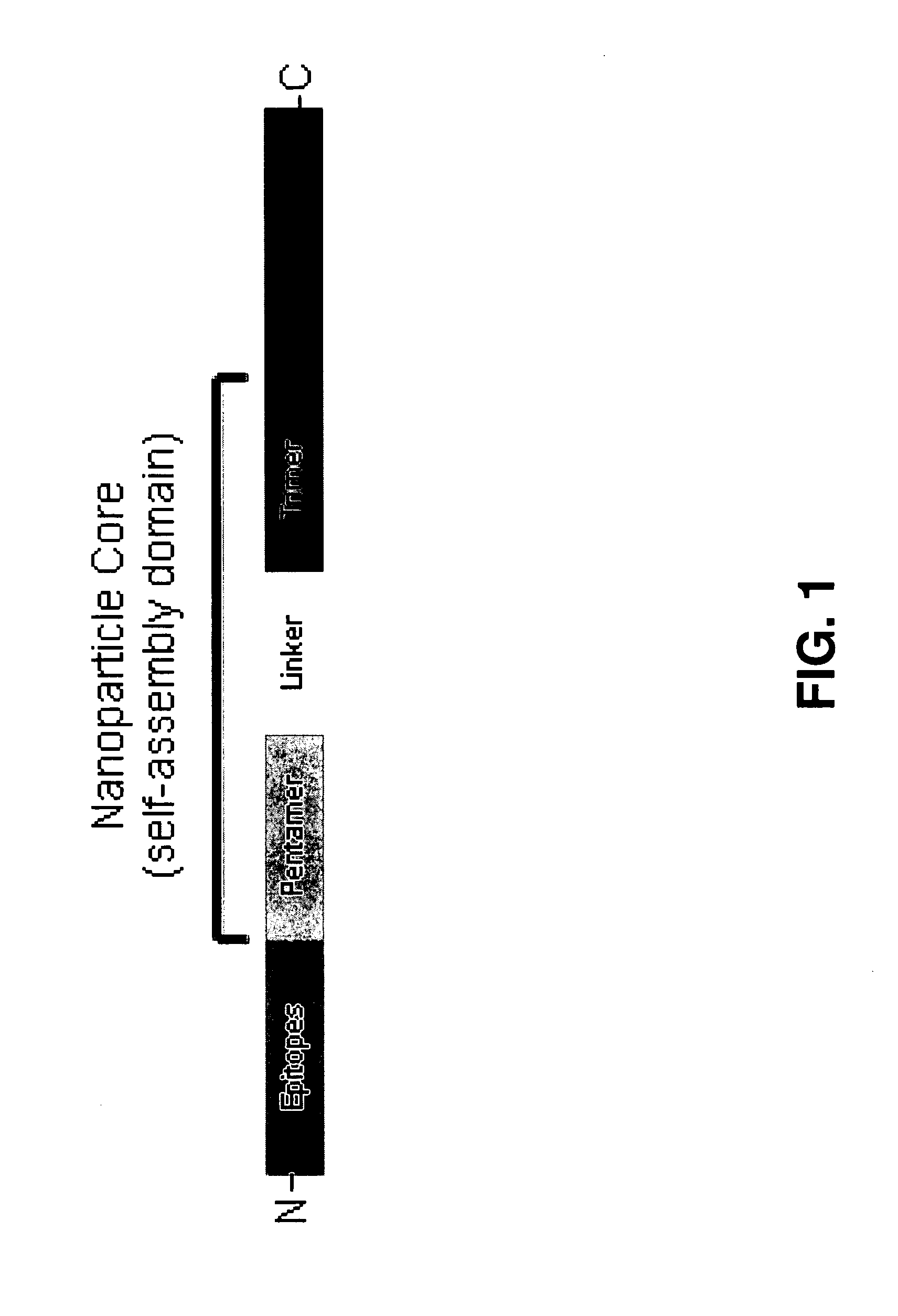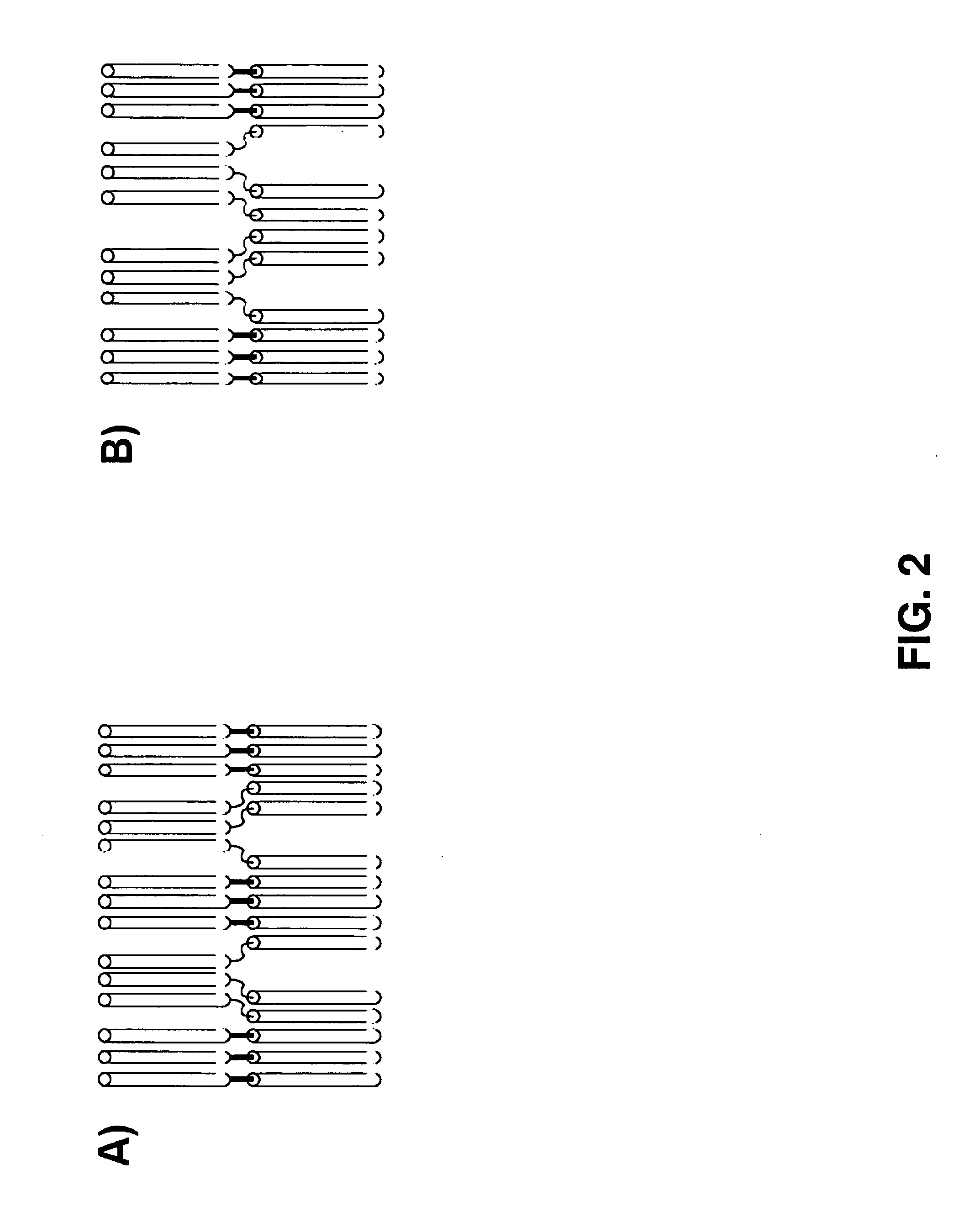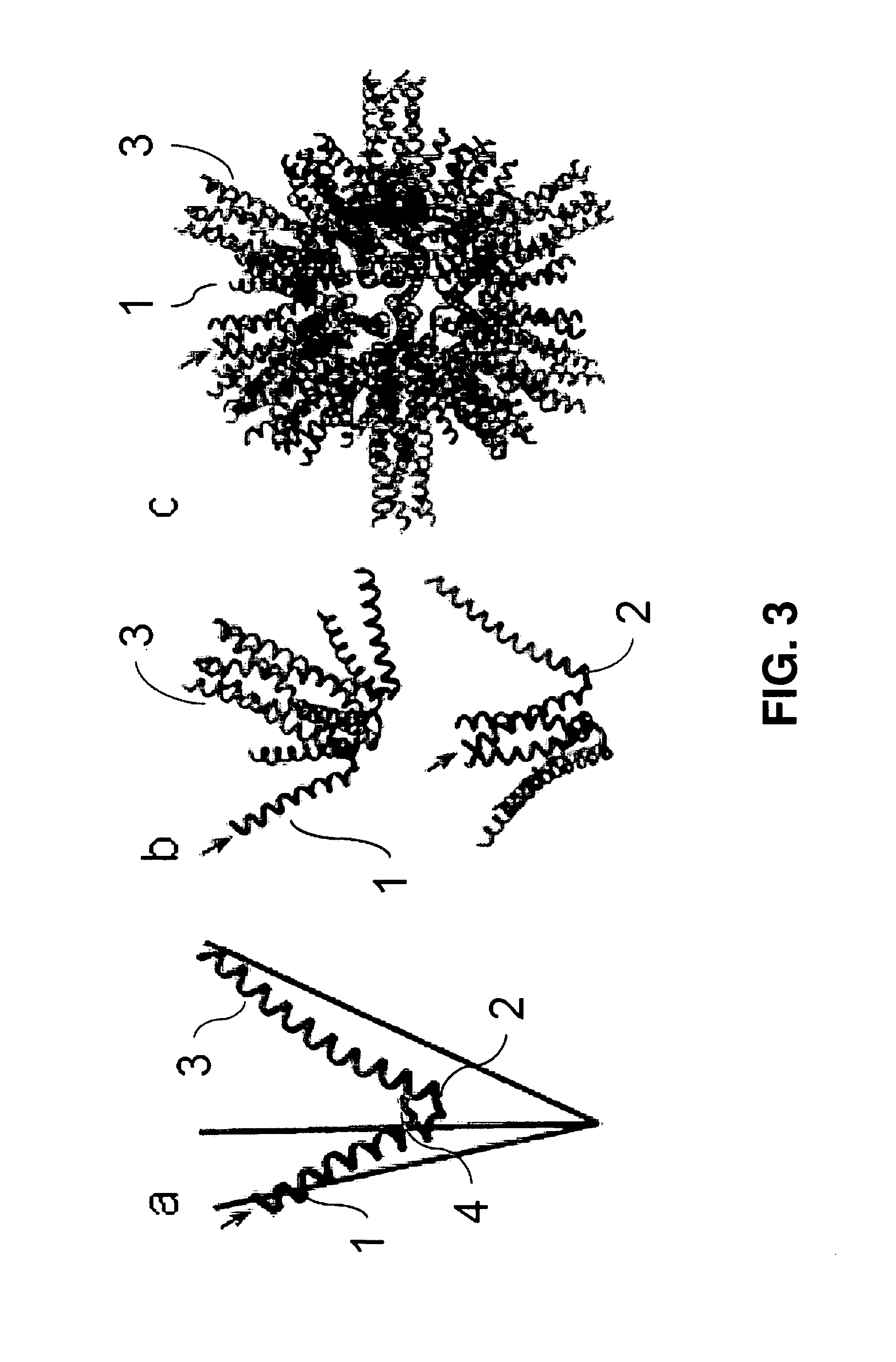Malaria vaccine of self-assembling polypeptide nanoparticles
a polypeptide nanoparticle and malaria vaccine technology, applied in the field of self-assembling polypeptide nanoparticles, can solve the problems of insufficient immunogenicity or unacceptable reactogenicity of many other malaria vaccines based on csp and other malaria proteins, and the vaccine provides only about 40% protective
- Summary
- Abstract
- Description
- Claims
- Application Information
AI Technical Summary
Benefits of technology
Problems solved by technology
Method used
Image
Examples
example 1
[0139]In this example we designed and produced a SAPN comprising the core self-assembly domain sequence (a pentameric and trimeric coiled-coil oligomerization domain joined by a short linker) that displays on its surface two repeats of the P. berghei malaria B cell epitope (DPPPPNPN)2D (SEQ ID NO 7). Mice were immunized with these particles with and without adjuvant, which showed that nanoparticles are highly immunogenic and induce protective immunity to lethal challenge with infective sporozoites in the absence of adjuvant. Long lasting antibodies were produced as demonstrated by protection of mice up to at least 3 months after a third injection. Furthermore, B-cell maturation occurs by the induction of Ig isotype switch from IgM to IgG2a / 2b.
[0140]To establish the utility of the design, the three linear, self-assembling polypeptides were produced as depicted in FIG. 5. N-Empty (NCP1) contains only the core assembly domain. N-PbCSP displays the di-repeat of the P. berghei CSP, which...
example 2
[0153]Exchanging the pentameric sequence COMP for Tryptophan Zipper (Trp zip)—effect on particle formation and immune response. The pentameric sequence COMP, though derived from mouse holds a strong similarity to the human COMP. To reduce the possibility of the induction of an autoimmune immunological reaction the COMP sequence was exchanged for a de novo designed try zip motif. These LP form excellent nanoparticles (see FIG. 4) but surprisingly were less immunogenic. As seen in FIG. 17 the nanoparticles that contained the Trp zip motif, T81c-Mal, were less immunogenic than the P4c-Mal construct that contained the COMP sequence. This immunogenicity was increased by the inclusion of the pan allelicDR epitope, PADRE, in the LP chain that makes up the SAPN T81c-8-Mal. However, in both experiments when mice were immunized with T81c-Mal or T81c-8-Mal and then challenged with 1000 live sporozoites only 60% ofthe mice survived compared to the 100% survival of mice immunized with P4c-Mal. T...
example 3
[0154]Determine the optimal density of B cell epitopes on SAPN for producing the most potent antibody response in the absence of an adjuvant. Antigens that cross-link surface membrane Ig are known to the efficiently activate B cells, whereas monomeric antigens tend to induce B cell tolerance in the absence of CD4+ Th cells. Studies of the epitope density of T cell-independent antigens have shown that arrays of 20-30 haptens, when optimally space by 5-10 nm, can efficiently cross-link and activate immature B cells in the absence of Th cells [33, 49, 50]. In addition, Jegerlehner et al., 2002 [51] demonstrated that IgG responses that are dependent on Th cells are also significantly dependent on epitope density. More importantly perhaps, Liu et al. have shown that antibody affinity constants are as much as 2 logs higher when antigens are displayed in optimal density arrays [39, 52]. These studies and others [35, 36, 38, 39] (FIG. 12), indicate that the density of epitopes on SAPN is an...
PUM
| Property | Measurement | Unit |
|---|---|---|
| Fraction | aaaaa | aaaaa |
| Diameter | aaaaa | aaaaa |
| Diameter | aaaaa | aaaaa |
Abstract
Description
Claims
Application Information
 Login to View More
Login to View More - R&D
- Intellectual Property
- Life Sciences
- Materials
- Tech Scout
- Unparalleled Data Quality
- Higher Quality Content
- 60% Fewer Hallucinations
Browse by: Latest US Patents, China's latest patents, Technical Efficacy Thesaurus, Application Domain, Technology Topic, Popular Technical Reports.
© 2025 PatSnap. All rights reserved.Legal|Privacy policy|Modern Slavery Act Transparency Statement|Sitemap|About US| Contact US: help@patsnap.com



